How a traditional Japanese house works
Categories: Asia | Design and Architecture
By Pictolic https://pictolic.com/article/how-a-traditional-japanese-house-works.htmlSays a blogger under the nickname Nefer, who calls herself a maniac traveler: "Living in an old Japanese house is an unforgettable experience. Everything is according to the traditions: genkan, washitsu, fusuma, shoji, tatami, dzabuton, futon, osiire. There is even a kamidana. With simenava and side, as it should be. I photographed everything, everything, everything, and shot a short video. I invite you to take a tour."
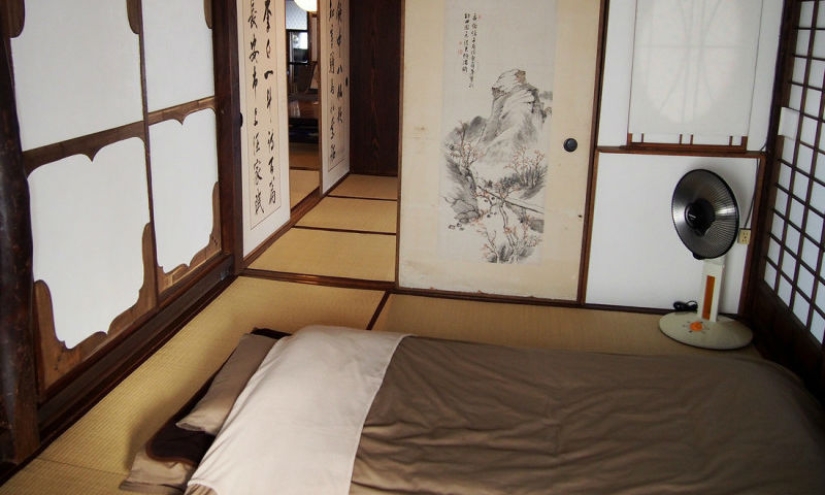

Genkan is a Japanese hallway. Shoes must be removed in this area. According to the rules, it is necessary to turn the shoes towards the door. It is necessary to step on the elevation barefoot.
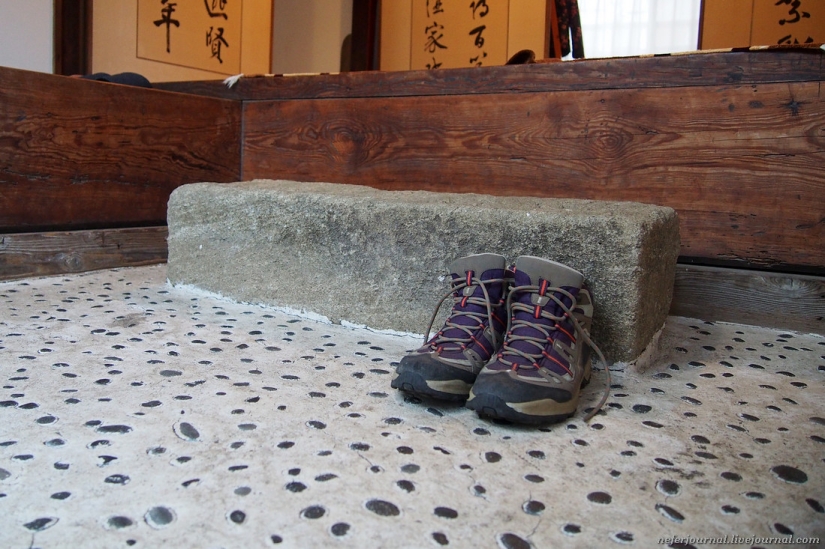
Traditional men's shoes may be a variant of geta.
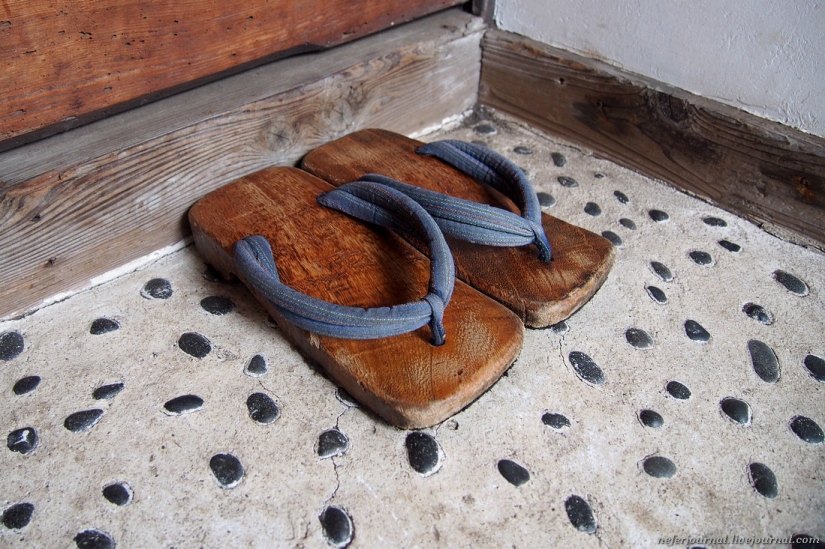
The room in the traditional Japanese style is called washitsu. The space is divided by fusuma internal sliding walls. Frames and lattices are made of wood, the outer side is pasted with opaque rice paper. The partitions separating the living quarters from the veranda are called shoji. Rice paper is used for them, which transmits light.
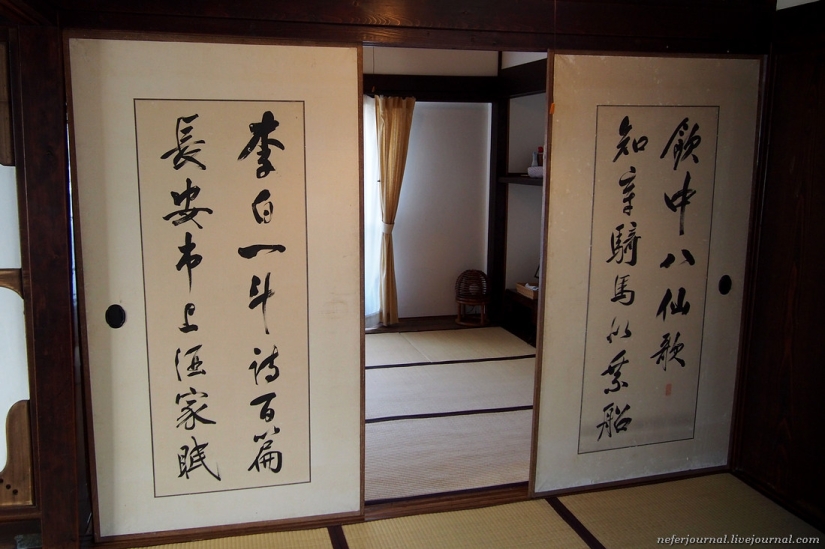
Kamidana is a niche for kami. A small Shinto shrine, like a home altar in Russian huts. Shimenawa, literally "enclosing rope", means sacred space. The white zigzag stripes are called shide. Kami - Japanese deities, spirits.
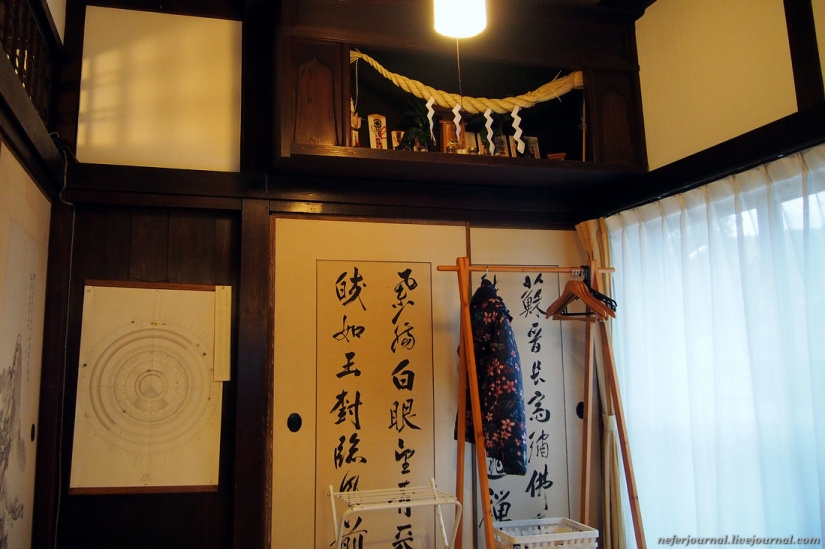


There is no central heating. You can turn on the air conditioner, if it is available in the house, or a floor heater. Judging by the smell, the heater is gas catalytic, so it's better not to use it.
It is expensive to heat the house with air conditioning, so they solve the problem locally. An understanding of all the charm of the Japanese ofuro bath comes. It is small in area, you can't stretch your legs, but the water does not cool down for a long time, and it is deep, only the head is outside. The owner carefully left the hot water bottles. Electrical sheets are also widespread. There are also special devices - kotatsu.

A futon is a thick soft mattress spread out at night for sleeping. In the morning, he cleans the closet. The cabinet is called oshiire.
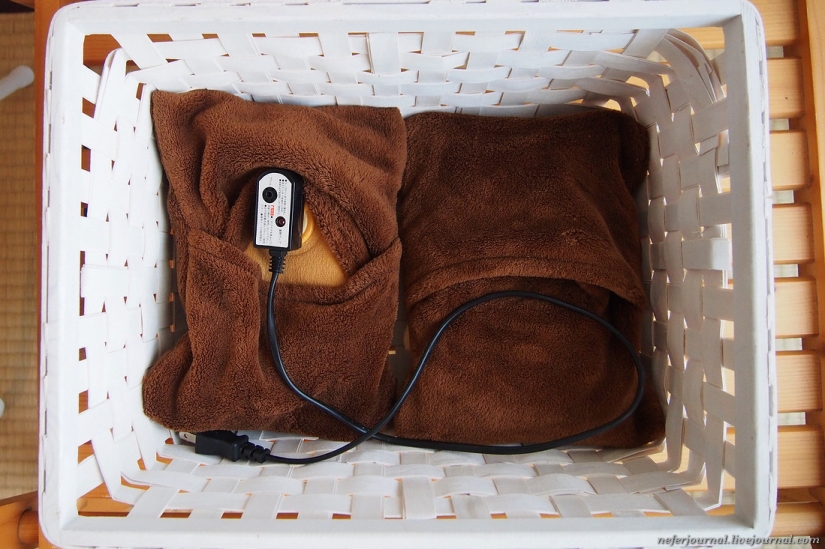
The corridor around the perimeter of the house in the warm season is combined with the garden. The walls just shift, at the same time it gets cooler. In this case, traditional shoji are replaced with modern glazing.
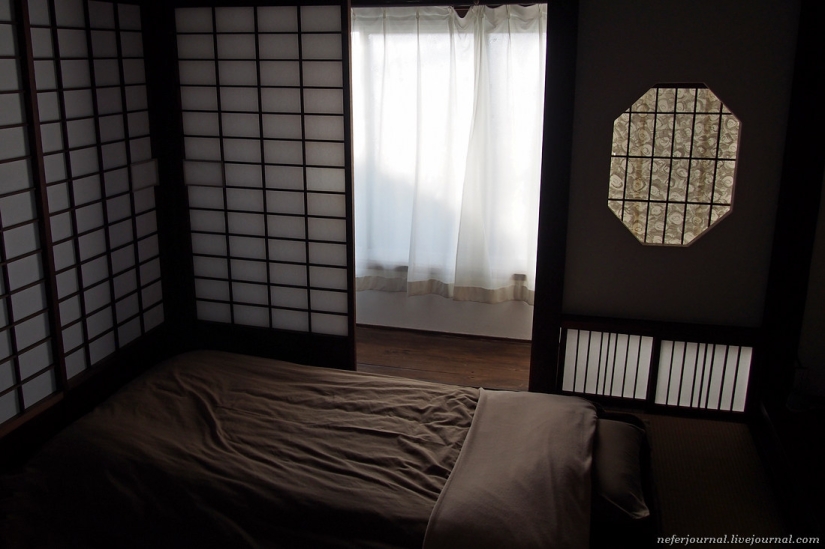
Doors are usually decorated with paintings. Please note that the image is shifted to the bottom, because it is designed for a sitting person. In a Japanese house, it is not customary to stand at all, moved from place to place and sat down on his knees again. The pose is called seiza, literally "proper sitting".
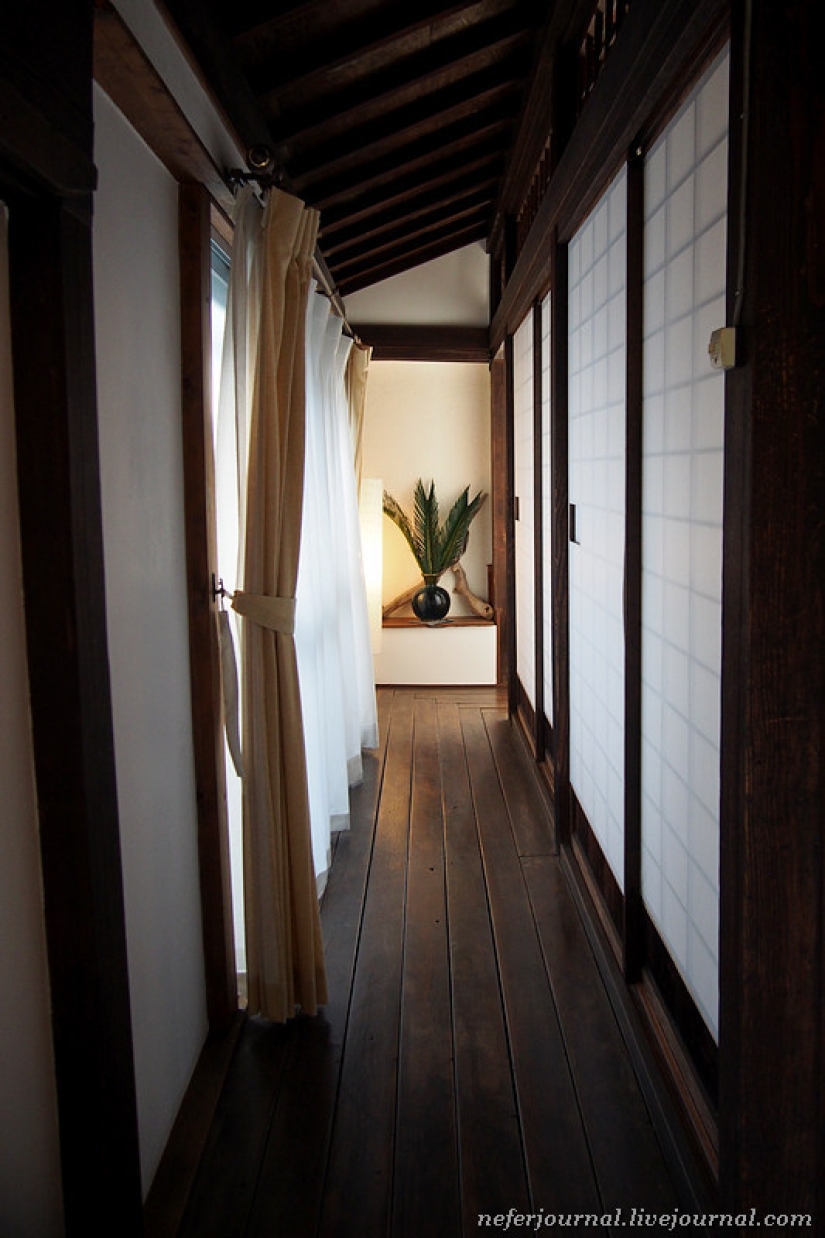
In the living room there is a European sofa and a Japanese table on low legs. The flat pillow is called zabuton. They are used for sitting on the floor or on chairs. Although Japanese chairs are actually a seat with a back.
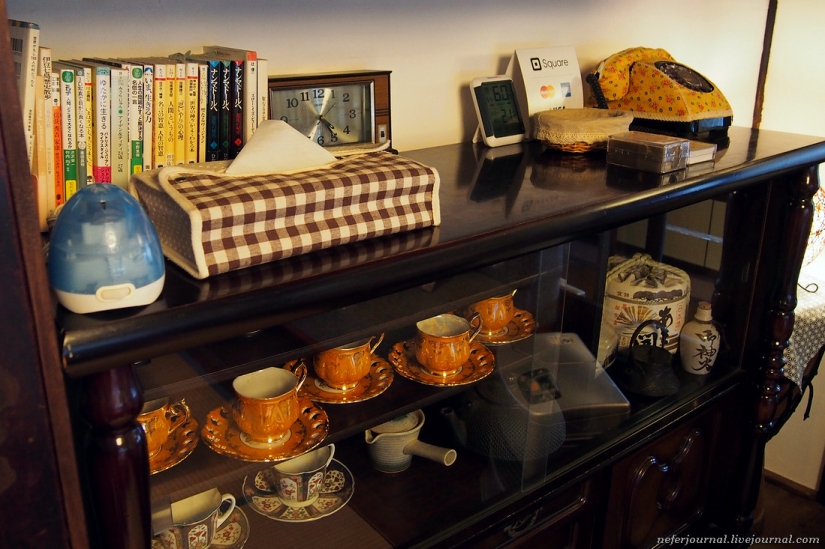

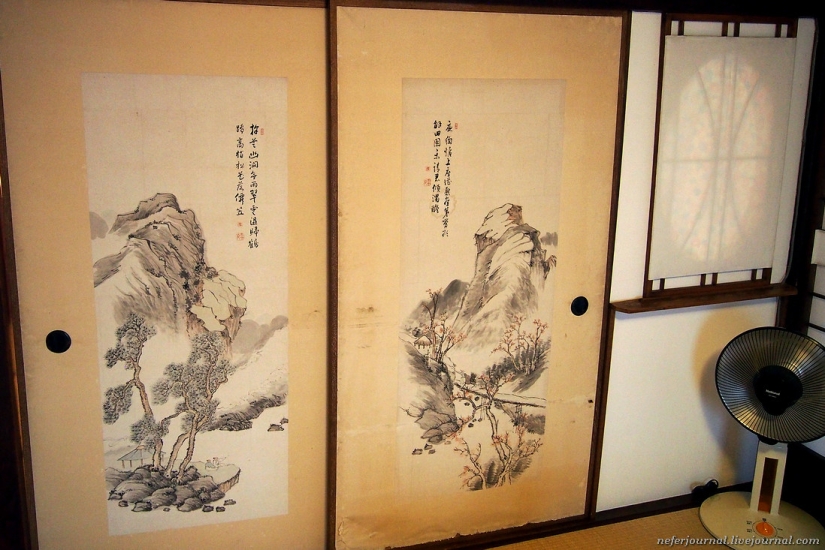
The kitchen is located outside the house, it is more of a terrace. There is a rice cooker, a microwave oven, something like a grill, a stove and a refrigerator. A lot of dishes.
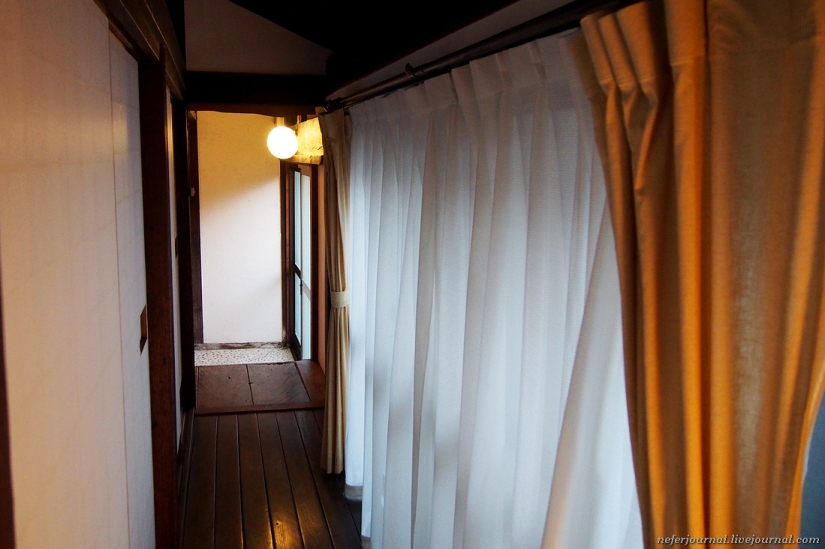
The washing machine is just huge.
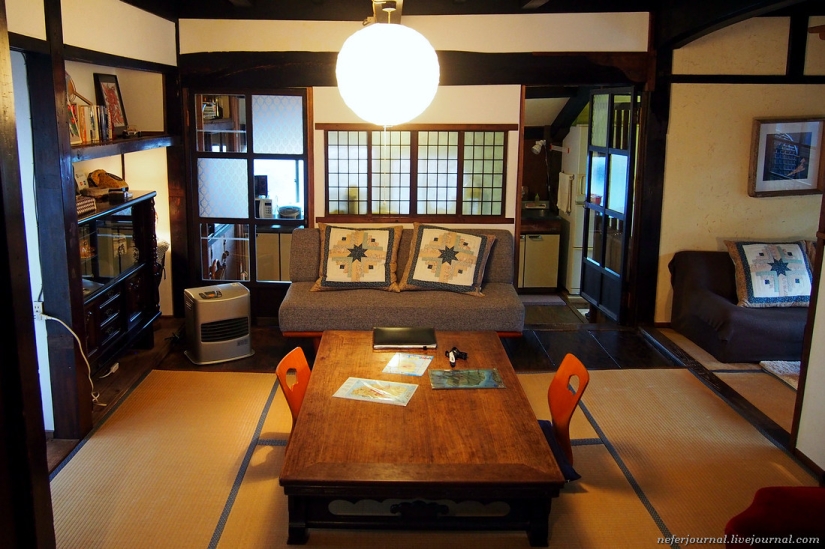
Since the main space of the house is located on an elevation, you can arrange a storage room. The basement is just like ours.
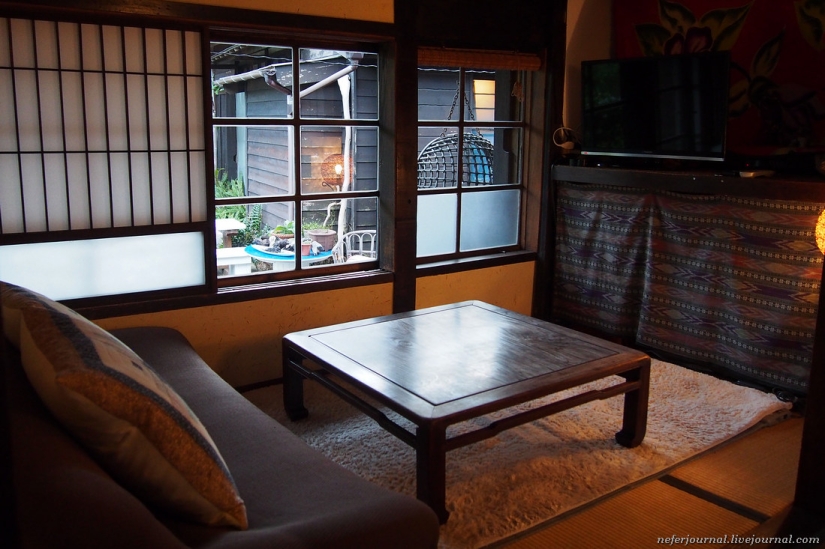


The window offers a view of the garden.
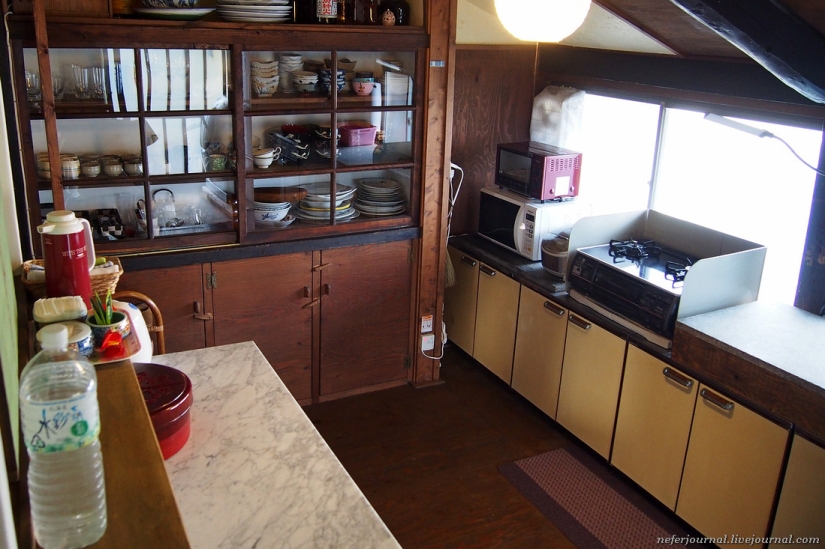
This is a Voneten Guest House on the island of Izu-Oshima, located in the town of Habuminato - in general, a village. The house was booked on the "Booking". The host is sociable and hospitable. I met him at the bus stop, took him to the supermarket, launched my drone, took a video for memory. It was very cool. The port of Habu is a quiet place, the best impressions.

Japanese cat Anko. Well-mannered, does not climb into the house. Even if the door is open, he sits outside.
Keywords: Home | Traditions | Japan
Post News ArticleRecent articles

Tatiana Gavrilova, better known by her creative pseudonym TanikoGa— is a Russian artist from Shlisselburg who loves cats and ...

Frida Kahlo advertising Mexico City, and Leonardo da Vinci — Florence? Let's fantasize about what advertising posters of ...
Related articles

This kotmadam not sorry neither forces, nor means to that beloved furry face was happy. In Switzerland, the cats are so sensitive ...

The first wedding night in Russia was arranged in a special way and had a lot of differences from the similar tradition of other ...

We present two dozen helpful little tricks that help to keep the house clean and defeat of trouble, like stains, odors or ...

Ready to let out your wildest fantasies? View that creates American digital artist Konzhe Marcus (Marcus Conge), which connects the ...